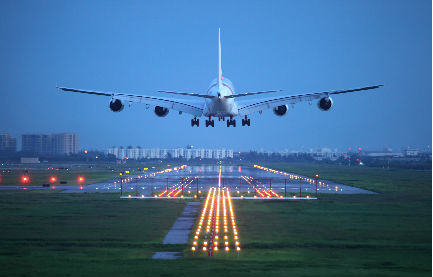You still take pride in setting the Most Irresponsible Flight record when you sailed off your parents’ roof on a wakeboard tied to some napkins and a homemade propeller. Sadly, however, we can’t say that your rooftop journey will make it to the annals of aeronautic history. To become the stuff of legends, one really needs to set a new standard in flight. In honor of National Aviation History Month, here are some aviators that raised the bar for all pilots. From the first flight in history to the first woman to conquer the art of flying, these milestones are the reason you can sip on that white zin in a first class cabin.
The Montgolfier Brothers and the First Hot Air Balloon
Before winged vessels were commonplace, or even possible, a couple of French brothers called Joseph-Michel Montgolfier and Jacques-Étienne Montgolfier noticed that their laundry would waft upwards when dried over a fire. Long story short, the creative kin thought to themselves, “How can humans take advantage of this phenomenon?” Then they built a sweet hot air balloon prototype and did what any savvy pilot would do in 1783–they put a duck, sheep, and rooster in the basket and sent it up in front of Marie Antoinette at Versailles. She said “I know two things: They can eat cake and I am psyched about this awesome balloon,” and with that, the world of flight was born!Count Ferdinand von Zeppelin and the First Flying Zeppelin
Another important moment in flight history came when German-born Ferdinand Adolf Heinrich August Graf von Zeppelin (try fitting that on a driver’s license) created the airship. This feat in flight looked like a hot dog shaped balloon, but the rigid frame provided support. The aptly named Zeppelin LZ1 took flight for the first time in 1900 with five passengers. After lasting a whopping 17 minutes in the air, the airship ran into a wee bit of trouble and ended up with an emergency landing. Still, this crucial milestone in aviation inspired future engineers and pilots.The Wright Brothers and the First Airplane
When it comes down to it, we would not have access to millions of flights every year without a dynamic duo named Orville and Wilbur Wright. What the American brothers lacked in cool name currency they more than made up for in innovation. Which is a good thing, because “Hey, I invented a little thing called the airplane” is a better opener than “Hi. I’m Wilbur.” One day in 1903, Orville climbed into the cockpit of their tiny biplane and soared…for about 120 feet. Hey, they had to start somewhere. Technically this success was the first controlled and powered heavier-than-air flight. We like to think it was also a gamechanger for the entire concept of travel.Thérèse Peltier and Women in Flight
For some reason, when people mention Thérèse Peltier in regards to women in flight, they like to focus on her status as “first female to be an airplane passenger.” Which, we suppose, was a big deal at the time. But hello people, she was also the first person without a Y chromosome to fly an airplane by herself. Circa 1908, Peltier made a solo flight of a few hundred feet and broke that glass ceiling wide open. With her status as first female pilot firmly in place, Peltier went on to make more successful flights before retiring.Charles Lindbergh and the First NYC to Paris Non-Stop Flight
![Photo Attribution: By San Diego Air & Space Museum Archives [No restrictions], via Wikimedia Commons](http://flights.waveinteractive.com/blog/wp-content/uploads/2015/10/Body-Lindbergh.jpg)
Photo Attribution: By San Diego Air & Space Museum Archives [No restrictions], via Wikimedia Commons
The history of aviation is storied, but what if it’s just begun? One of these days we’re bound to get catapulted into the atmosphere in a giant orb. Get over your fear of flying and embrace it!
![Photo Attribution: Antonio Carnicero [Public domain], via Wikimedia Commons](http://flights.waveinteractive.com/blog/wp-content/uploads/2015/10/Body-first-hot-air-balloon.jpg)
![Photo Attribution: Peter Scherer [Public domain], via Wikimedia Commons](http://flights.waveinteractive.com/blog/wp-content/uploads/2015/10/Body-first-zeppelin-ascent.jpg)
![Photo Attribution: By John T. Daniels [Public domain], via Wikimedia Commons](http://flights.waveinteractive.com/blog/wp-content/uploads/2015/10/Body-first-flight.jpg)
![Photo Attribution: Agence Rol [Public domain], via Wikimedia Commons](http://flights.waveinteractive.com/blog/wp-content/uploads/2015/10/Body-Therese-Peltier.jpg)



